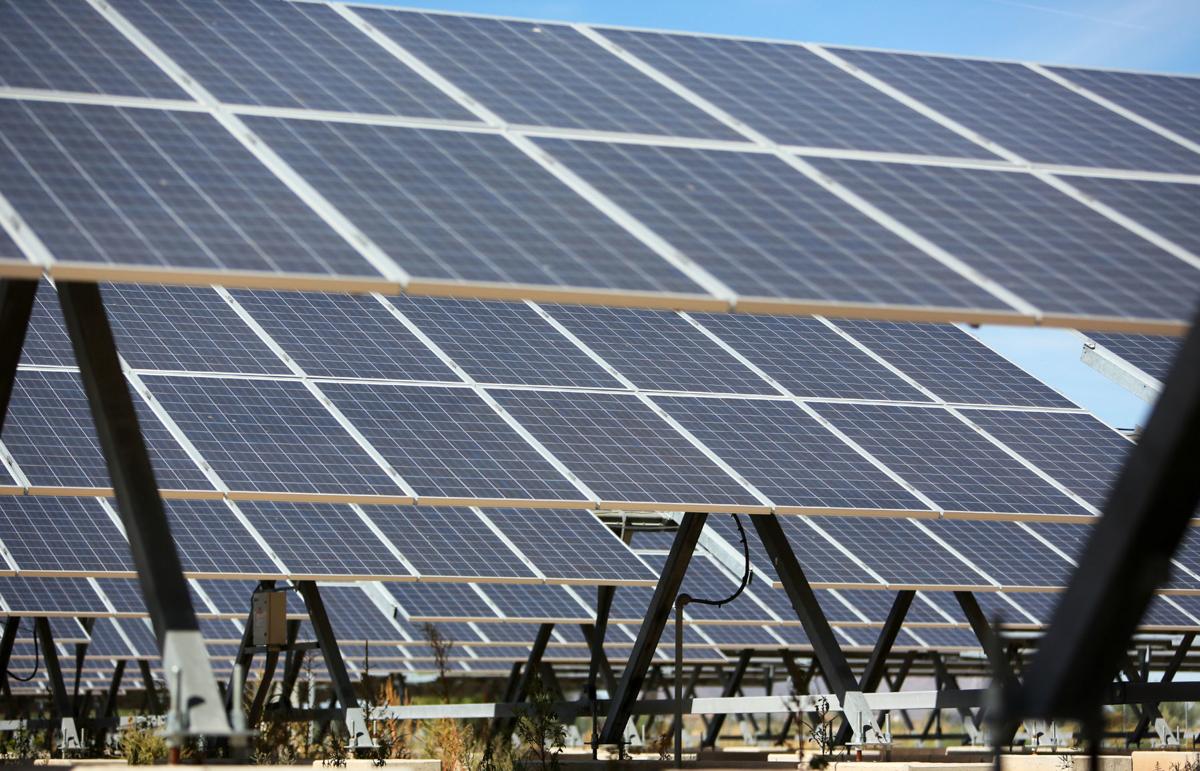New solar installations at 18 county facilities could add 10.2 megawatts of electricity generation in the near future, more than doubling the current eight megawatts it receives from 22 existing sites.
As it stands, the county gets roughly 7 percent of its energy from solar, but that could rise to 15 percent with the new arrays, according to estimates described as “conservative” by a county official.
The project is expected to bring substantial energy savings — more than $32 million over the next 20 years.
Supervisors approved 18 contracts worth an estimated $36 million Tuesday. However, that figure is for the purchase of electricity at fixed rates from two solar contractors over the next two decades, not for the construction of any new facilities, according to officials and documents.
“It’s money that would have already been spent,” said facilities management Director Lisa Josker, referring to the county’s energy costs.
Over the summer and on party-line votes, the supervisors approved a pair of resolutions committing the county to aligning with the terms of the Paris Accord, from which President Trump has said the United States would withdraw.
Among other things, the resolution directs County Administrator Chuck Huckelberry to “rapidly scale up renewable energy infrastructure by adding up to 40 to 42 megawatts of solar photovoltaics” through 2025. In a 2007 resolution, the board committed itself to getting 15 percent of its energy from renewable sources by 2025, a goal that seems poised to be met early.
“I think it’s great we’re able to accelerate our use of renewables for county buildings,” Supervisor Richard Elías said. “It’s one of those issues where government needs to lead the way.”
“We took our sustain- ability plan really seriously,” Supervisor Ramón Valadez said. “And it was important enough that we actually achieved it early.”
If things go according to plan, construction of the solar facilities, which will be built and operated by the Tucson company Solons and Massachusetts-based firm Ameresco through what are known as solar services agreements, could begin as early as next year, according Solons sales and marketing Vice President Luke Alm.
Six of the solar arrays will go in at libraries, including the Dusenberry and Eckstrom-Columbus facilities, with the remaining going to the jail, parking garages and other county facilities. The two largest projects are expansions of existing solar arrays at the Tres Rios Wastewater Reclamation plant and the old Roger Road reclamation facility.
Over the course of the 20-year contracts, the county will pay fixed rates per kilowatt hour, which vary from site to site. For example, the Water Energy Resource Center project on Roger Road — at 4.9 megawatts, the largest single proposed installation — the current estimate for the fixed rate is 5.4 cents per kilowatt hour, which spells estimated savings of $18.4 million over 20 years.
The exact solar rates, which currently range from roughly 5 cents to 14 cents, could shift as the installations are developed, but will remain the same over the contract period. Rates from Tucson Electric Power, the county’s largest provider, and other utilities are expected to slowly but steadily rise, according to county documents.
The current average price per kwh for the county from all utilities is about 11.8 cents, which is actually below estimated solar rates at some of the new sites, according to information provided by Josker. The price for solar is around 12.3 cents.
However, the county estimates that non-solar rates will rise by 3 percent every year. At the resource center site, the TEP rates were expected to nearly double to more than 17 cents per kwh over the next 20 years.
TEP spokesman Joseph Barrios
Back in 2015, when the supervisors approved a comparable $22 million deal, TEP spokesman Greg Lucero urged the supervisors to reconsider, saying the deal could increase operating expenses and result in rising costs for other customers.
This time around, Barrios said the fact that the county’s plan will bring more solar to the area is a positive development.
“The county is pursuing this opportunity to achieve its own renewable energy goals, and that’s a good thing,” he said. “And as they want to pursue more goals in solar in the future, we’d be happy to help them.”
County officials were hoping to get the deal approved before the Arizona Corporation Commission makes a decision on a pending TEP case that the county thinks could decrease the anticipated savings. TEP is asking to pay lower rates for solar producing customers’ excess electricity, for which they currently pay retail prices.
“This will allow these sites to have the current solar net metering rate after the rates change . . . as a result of the ACC’s decision,” Josker wrote in an email.
The contracts were approved with a 3-2 vote, with supervisors Ally Miller and Steve Christy opposing them. The 2015 deal was approved unanimously. Neither Miller nor Christy returned calls seeking comment.





